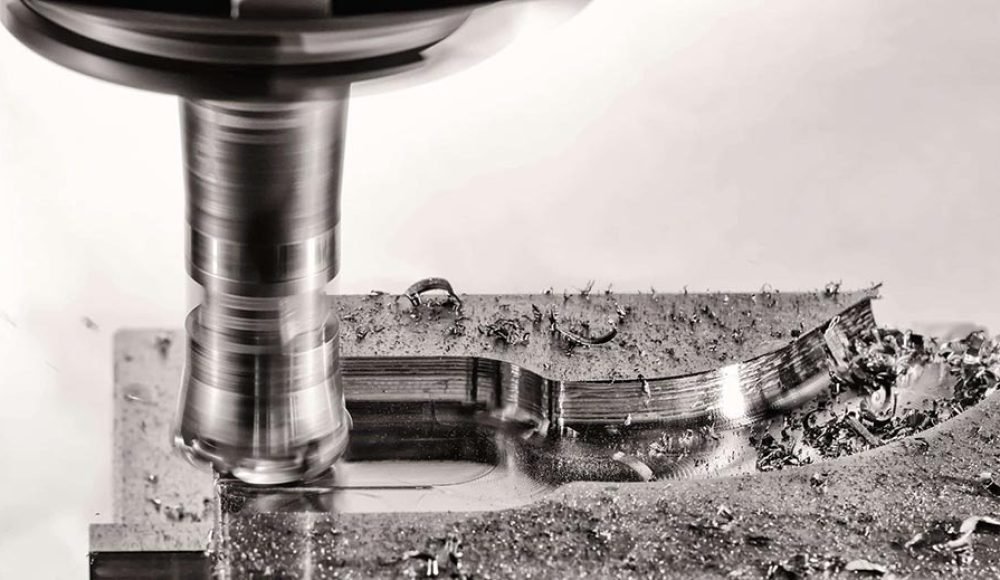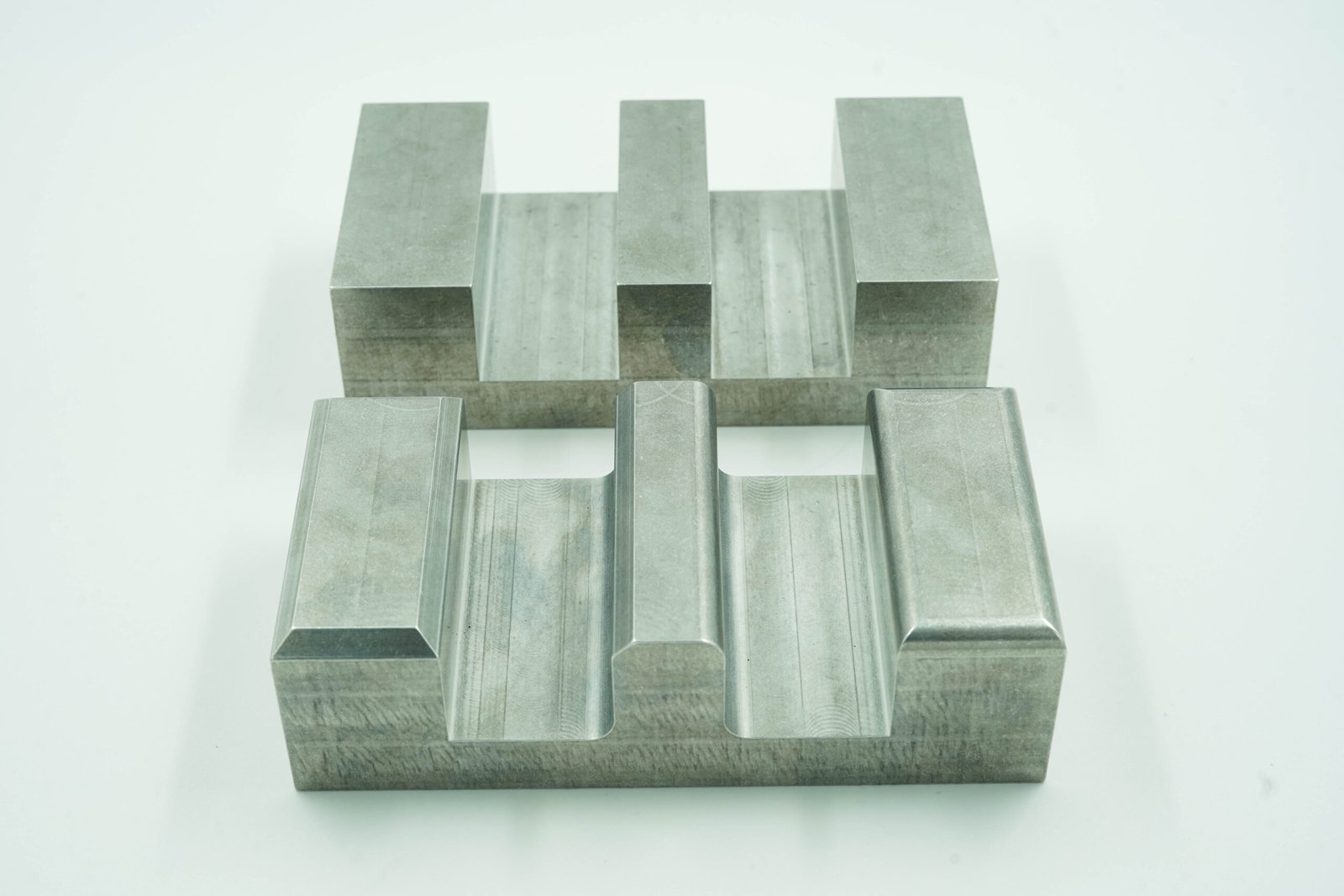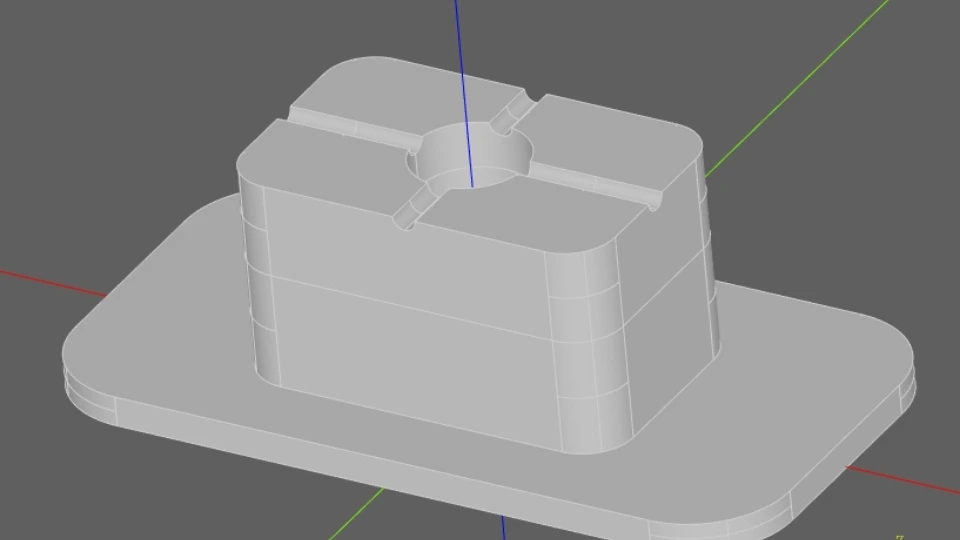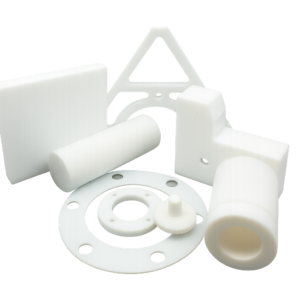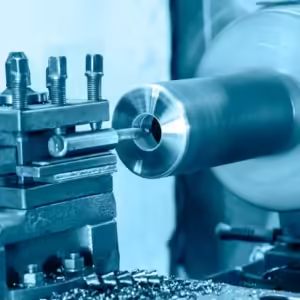機械的設計と製造, フィレットはしばしば灰色の領域に座っています. 一部の部分には完全に切り身がありません, すべてのエッジが鋭く定義されています, 他の人は、ほぼすべての可能なエッジに丸い角を備えています.
フィレットは単なる化粧品の詳細以上のものです。ストレス集中を減らすことで機械的性能を大幅に改善できます, 亀裂を防ぐ, 人間工学の強化. しかし, 不要なフィレットは、CNCプログラミング時間を長くすることができます, 機械加工コスト, そして、複雑なアセンブリさえ.
フィレットエンジニアリングには、2つの主要なコンポーネントがあります:
フィレットジオメトリデザイン - CADモデル内の2つの表面間の丸い遷移を作成する.
フィレットの機械加工 - CNCツールを使用して物理的な部分にフィレットを生成する, 最も一般的には、角の丸いエンドミルまたはボールエンドミル.
このガイドでは, フィレットが必須であるときに探索します, 彼らが避けるべきとき, そして、最大のパフォーマンスと製造可能性のためにそれらを設計する方法.
フィレット対. その他のエッジ治療
フィレットは、チャムファーなどの他のデザイン機能と混同されることがあります, コーナー半径, とベベル. それらはすべて鋭いエッジを変更します, それらはジオメトリと機能が異なります:
フィレ - 滑らか, 2つの表面間の湾曲した遷移, 半径で定義されています. 可能です 内部 (凹面) または 外部の (凸型).
コーナー半径 - 具体的には丸い 外部の 部品の端.
面取り - フラット, 角度のあるカット (多くの場合45°) それは鋭い角を削除します.
ベベル - 水平または垂直のエッジから伸びる傾斜した表面, 必ずしも45°ではありません.
重要な区別: フィレットには真の半径曲線があります, チャンファーとベベルはそうではありませんが. 多くの場合、チャンファーはアセンブリ機能に優先されます (例えば, ネジまたはピン挿入), 切り身はストレス集中を減らすのに優れていますが.
フィレットを避ける必要がある場合
すべての部分がフィレットの恩恵を受けるわけではありません. 間違った場所にそれらを追加すると、機能を改善することなくコストを増やすことができます.
3D印刷された部品
添加剤の製造において, 機能をカットするためにクリアランスを必要とするツールはありません, したがって、鋭い内部角は完全に実行可能です. フィレットは、3Dプリントされたデザインでのみ必要になる場合があります ストレス緩和 高負荷エリアまたは 審美的な目的.
しかし, 後で3D印刷からCNCの機械加工に移行する予定がある場合, 再設計コストを避けるために、最初から製造可能なフィレットサイズを組み込む.
空洞と穴の底面
ポケットの底端を切り分けます, 壁, またはブラインドホールには3D加工パスとボールエンドミルが必要です, どれの:
材料の除去を遅くします フラットエンドミルと比較して.
ツールの摩耗と破損リスクを高めます.
より長いセットアップとプログラミング時間が必要です.
多くの場合, 穴の底でのストレスは、変化することでより効果的に減少させることができます 穴の深さ, 壁の厚さ, または機能配置 - 複雑なボトムフィレットを追加するよりもはるかに安い.
フィレットのCNC加工に関する考慮事項
最小フィレットサイズはツール制限です
CNCカッターは丸いです, そして、彼らは自分の半径と同じくらい小さい曲線しかカットできません.
ほとんどのショップが在庫している最小の標準ツールは 1/32「 (直径0.8 mm), つまり、特別なツールなしで作ることができる最小のフィレット半径は について 0.4 んん.
それよりも小さいフィレットをデザインする場合, 店はカスタムカッターを注文する必要があるかもしれません - それは、より長いリードタイムとより高いコストを意味します.
ヒント: コストを抑え、遅延を避けるために、一般的なカッターサイズに固執します.
カットの深さは、フィレットのサイズに影響します
より深いツールに到達する必要があります, それが屈するほど (そらす) そして振動します. これにより、小径カッターがどれほど深く壊れたり、貧弱な仕上げを離れたりすることなく、どれだけ深くなるかが制限されます.
ほとんどの機械工が続く経験則です:
| 材料 | 最大切断深さ | 同等のフィレットサイズの制限 |
| 鋼鉄 | 5×ツールの直径 | 10×フィレット半径 |
| アルミニウム/プラスチック | 10×ツールの直径 | 20×フィレット半径 |
例: 使用する場合 1 アルミニウムのMM半径のフィレットカッター, カットすることができます 20 トラブルに遭遇する前に、MMディープマックス.
通常、より大きな半径が簡単です
機械工は、彼らがより強く使用させるので、より大きな切り身が大好きです, 素材をより速く、長持ちするより大きなカッター.
CADでは、小さな半径が洗練される可能性があります, しかし、実際には機械加工時間を2倍にする可能性があります.
不必要な化粧品を避けてください
フィレットが純粋にルックス用である場合 (化粧品), 自問してください: 余分なマシンの時間に値しますか??
時々, 機械加工後に手動で行われるクイックレイファーまたは小さな半径でエッジを壊すだけで、より速くて安価になります.
フィレットのサイズを標準ツールにマッチします
一般的なフィレット半径 - 1 んん, 2 んん, 3 んん, 6 mm — 標準カッターと一致します.
ような奇数のサイズ 2.37 mm は、機械工が補間する必要があることを意味します (複数のパスでフライス加工します), どちらの方が時間がかかりますか.
代替方法を検討してください
強度のために丸みを帯びたエッジだけが必要な場合 (溶接継手のような), CNC 加工はまったく必要ないかもしれません.
すみ肉溶接 パーツを組み立てた後、丸い接合部を作成できます, 余分な加工を一切省略.
切り身のオプションのユースケース
必ずしも必要というわけではありませんが、, フィレットは部品設計の特定の側面を改善できます.
コスメティックフェイスエッジ
半径を小さくすると、サーフェスの遷移がシームレスに見え、知覚品質が向上します。. これらは、機能ジオメトリを完成させた後にのみ使用してください。, 加工時間が増加するため.
安全性と人間工学
鋭利なエッジのある部品は、取り扱い中に怪我をする可能性があります, 特に金属部品では. 機械工は通常、デフォルトでエッジを「破壊」します, しかし、必要な場合は、 快適さのための正確な半径 (例えば, 人間工学に基づいたグリップ), 図面で明確に指定します.
アセンブリアシスタンス
フィレットはピンを導くことができます, シャフト, またはファスナーを所定の位置に配置します, しかし 通常、チャンファーが推奨されます 交配部品は、かなりのコストを追加せずに優れたリードインを提供するため.
切り身が必要なとき
2つの垂直壁の間の角の内側
CNC切削工具は丸いです, だから彼らは完全に鋭い90°の隅を作ることができません.
あなたのデザインが内側の隅に会う2つの垂直壁がある場合, あなた 持っている 一致するフィレットを追加します (またはより大きい) 切削工具の半径.
なぜ? フィレットなし, このツールは、角に余分な素材を残します, そして、あなたの部分はその交尾部分に合わないでしょう.
例: 金属板の中の正方形のポケットを考えてください - フライスカッターが丸いので、コーナーは常にわずかに丸くなります.
角度のある表面または湾曲した表面間の内部エッジ
2つの角度または曲がった表面が出会うと, 特にオーガニックまたはフリーフォームの形状で, 彼らは通常、ボールのエンドミルで機械加工されています.
あなたがそこに持つことができる最小のフィレットは、そのボールのエンドミルの半径があります.
なぜ? ツールの半径よりも曲線をより狭くしようとすると, カッターは、カットされていない素材を離れずに角に届かない.
例: 流れるような車のエンジン部品, 彫刻された表面, 曲線間のすべての内部遷移には、ツールサイズに基づいて組み込みの切り身があります.
垂直壁が傾斜または湾曲した表面に出会う場所
これは視覚化するのが少し難しいです - 背の高い垂直の壁を想像してください, そしてその基地で, 平らな床の代わりに, 斜面または曲線があります.
フィレットなしで壁と曲線を切ってみようとすると, カッターは、ジャンクションにすぐにカットされていない素材の小さなストリップを残します.
ここにフィレットを追加すると、滑らかな遷移が保証され、残りの素材が避けられます.
例: プラスチック部品のカビの空洞に, 垂直側から湾曲したベースへの移行には、ほとんどの場合、カッターが自由に動くことができるようにフィレットがあります.
切り身のエンジニアリング利点
彼らはストレスの蓄積を減らします
鋭い角は応力磁石のように機能します - 部品が荷重下にあるとき, 力はその鋭い端に集中します, 亀裂につながる可能性があります.
スムーズに強制的に強制的に広がる切り身が広がります, したがって、部品は壊れることなく、より多くの負荷を処理できます.
例: 金属片を曲げることを考えてください - それはほとんどの場合、鋭い曲げに割れます, 真ん中ではありません. 滑らかな曲線がその問題を修正します.
彼らは部品が長持ちするのを助けます
繰り返し荷重と荷降ろしを見る部分で (マシンアームやブラケットのように), 鋭い角は、時間の経過とともに疲労亀裂を引き起こす可能性があります.
フィレットはこの「疲労効果」を減らします,」あなたの部品が摩耗する前により多くのサイクルを意味することを意味します.
例: 航空機のコンポーネントには、疲労の故障を防ぐために、ほとんどの場合、高ストレス領域に切り身があります.
彼らは処理するのをより安全にします
あなたの部分が人々によって触れられたり組み立てられたりする場合, 鋭い角は手を切ったり、服を着たりすることができます.
フィレットはその鋭いエッジを取り除き、パーツをより快適で安全にして作業しやすくします.
例: ハンドル, カバー, そして、コントロールパネルにはしばしば寛大な切り身があるので、彼らはあなたの手に滑らかに感じます.
彼らは流れを改善することができます
液体や空気が角を移動するデザインで, 鋭いエッジは、乱流を引き起こしたり、流れをブロックしたりする可能性があります.
フィレットは、液体がよりスムーズに方向を変えることを可能にします, 効率の向上.
例: 配管システムで, 内部の切り身は、圧力降下を減らし、液体の動きを改善します.
彼らは良く見えます
滑らかな丸いエッジは、しばしば製品により「完成した」プロフェッショナルな外観を与えます.
これは機能よりも美学に関するものです, 消費者向け製品にとって重要です.
例: あなたのスマートフォンの丸い角は快適さだけではありません - 彼らはまた、デバイスをなめらかに見せます.
機械加工を容易にすることができます
CNC加工では, ツールが丸いので、いくつかの鋭い内部角を単純に切ることはできません.
フィレットを追加します, ツールの形状に合った方法で部品を設計しています, 機械加工をより速く、より安くすることができます.
切り身に関する重要な事実
フィレットは丸みを帯びたエッジです
その中心に, フィレットは、2つの表面が出会う鋭い角を丸めているだけです.
それは可能です 内部 コーナー (凹面) または 外 端に (凸型).
例: 刃が包丁のハンドルを満たす内部カーブは内部の切り身です.
CNCツールは、特別なカッターで切り身を作ります
ほとんどのCNCフィレットは、aを使用して作られています コーナーラーニングツール またはa ボールエンドミル.
これらのツールは、カットするときに自然に滑らかな曲線を残すように形作られています, したがって、毎回一貫した半径が得られます.
切り身は湾曲しています, シャンファーはフラットです
それらを混ぜるのは簡単です, しかし、違いは単純です: フィレットと面取りの詳細の違い
フィレ =曲線
面取り =平らな角度
指を端に走らせた場合, フィレットは滑らかで丸みを帯びています, 通信係はまっすぐな斜面のように感じます.
フィレットはストレス緩和に適しています
部品が圧力または曲げられている場合, 鋭い角は、時間の経過とともに割れる可能性のあるストレスの「ホットスポット」を作成できます.
フィレットは遷移を滑らかにし、そのストレスをより大きな領域に広げる, パーツを強化します.
例: これが、飛行機の窓の角が丸くなっている理由です - 鋭いものは空気圧サイクルの下で割れます.
彼らはあまり素材を追加しません, しかし、彼らは多くの強さを追加します
フィレットを追加することは、部品の横断面積をかろうじて変えません, しかし、ストレス集中を大幅に減らすことができます.
つまり、部品をより重くしたり大きくしたりせずに強度と耐久性を向上させることができます
彼らはあなたにお金を節約したり、費用をかけたりすることができます
フィレットが標準のツールサイズと一致する場合, 実際に機械加工を容易にすることができます.
しかし、それが奇妙なサイズである場合、またはトリッキーな場所にある場合, 加工時間とコストを増やすことができます.
トリックは知っていることです どこ それらを置くために どれほど大きい それらを作るために.
結論
フィレットイン CNC加工 強力なデザイン機能ですが、戦略的に使用する場合にのみ. 理解によって それらが必要なとき, スキップできるとき, そして、それらを適切にサイズする方法, 機械加工コストを削減できます, パフォーマンスを向上させます, 製造を簡素化します.
疑わしいとき, 設計プロセスの早い段階で機械加工パートナーに相談してください. よく計画された切り身は、費用のかかる違いになる可能性があります, 複雑な部分と最適化, 製造可能なデザイン.
よくある質問
1. What is the fundamental difference in function between a Fillet and a Chamfer?
The difference lies in geometry and stress relief:
-
フィレ: あ curved transition (半径で定義されています, R). Its primary function is ストレス緩和 by smoothly distributing force away from sharp corners, which is critical for parts under dynamic or fatigue loading.
-
面取り: あ フラット, 角度のあるカット (いつもの 45°). Its primary function is to break a sharp edge for safety and assembly ease (providing lead-in for pins or screws), but it is less effective than a fillet for stress concentration reduction.
2. Why can’t a standard square end mill create a perfect 90° internal corner?
A standard end mill has a round circumference. When it cuts, the center of the tool can reach the corner intersection, but the radius of the tool cannot; it always leaves a small amount of material behind, creating a rounded internal corner. したがって, every internal corner in a pocket or slot machined with a standard end mill must have a radius equal to or larger than the radius of the cutting tool used.
3. What is the rule of thumb for designing the minimum internal fillet size for CNC machining?
The fillet radius (R) must be equal to or slightly larger than the radius of the smallest end mill that can reach the feature. A common industry standard is to design the fillet radius R to be 1.2 X tool radius または 0.6 X tool diameter. This small buffer helps ensure the tool can move smoothly without being overstressed, and it allows the use of standard, off-the-shelf cutters, which keeps costs down.
4. Why do unnecessarily large or odd-sized fillets increase machining costs?
-
Large Fillets: Require the use of a very large tool or multiple passes with a smaller tool, increasing machine time.
-
Odd-Sized Fillets (例えば, R2.37 mm): Force the machinist to use interpolation (cutting the curve with multiple short linear passes) rather than using a standard コーナーラーニングツール. Interpolation takes longer and is more complex to program than simply using a tool that already matches a standard size (例えば, R3 mm).
5. What does the ratio of “Max Cutting Depth” to “Tool Diameter” indicate for fillets?
This ratio relates to the tool’s aspect ratio そして 剛性. The deeper a tool must reach to cut a fillet, the longer its stick-out and the greater the risk of tool deflection and vibration. The article suggests rough guidelines (例えば, 5 X tool diameter for steel) to limit the depth a small-diameter cutter can safely reach without breaking, 曲げ, or creating a poor finish due to chatter.
6. When is it better to use a Chamfer instead of a Fillet for assembly assistance?
あ 面取り is generally preferred when the goal is to provide a smooth リードイン for a mating part, such as a pin, shaft, or fastener. Chamfers are faster and cheaper to machine than fillets and are highly effective at guiding components during assembly because the flat, angled surface directs the mating piece to the center more precisely than a full curve.
7. What are the key engineering benefits of adding fillets in high-stress areas?
The key benefit is the reduction of 応力集中. Sharp internal corners act as stress risers, where external loads are amplified, leading to localized failure. A fillet smoothly transitions the load across a larger area, reducing the peak stress and significantly increasing the part’s fatigue life そして ultimate strength. This is vital for brackets, load-bearing arms, and anything subjected to cyclic loading.

